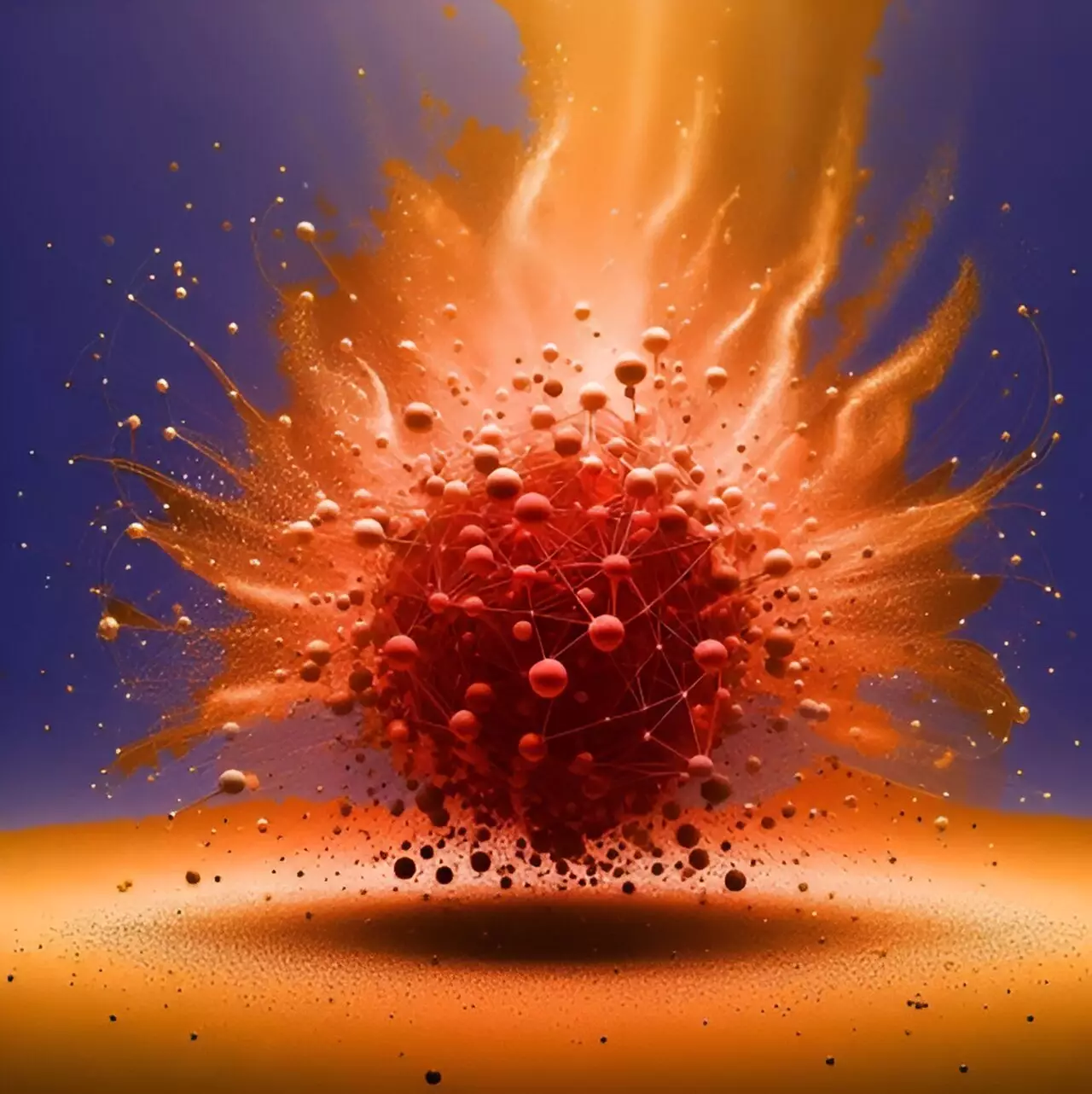The early universe, a mysterious and tumultuous realm 250,000 times hotter than the core of our sun, posed a cosmic puzzle. In this vivid tapestry of conditions, the very building blocks of matter—protons and neutrons—were nowhere to be found. Scientists ventured into this ardent abyss by recreating these extreme conditions within particle accelerators, where atoms are collided at nearly the speed of light. Through these high-energy smash-ups, we gain crucial insights into how matter as we know it came into existence.
However, traditional methods of understanding these origins came into question. Newly unveiled research reveals a surprising twist: a significant portion of the particles produced during these collisions does not stem from the primordial soup of quarks and gluons as previously thought. Instead, nearly 70% can arise from reactions that took place mere microseconds after the birth of the universe. The ramifications of this discovery are profound, necessitating a reevaluation of our understanding of the kaleidoscopic evolution of matter.
The Dance of Quarks and Gluons
To grasp the universe’s formation, one must appreciate the intricate dance of quarks and gluons within those incandescent moments following the Big Bang. Just one millionth of a second into the cosmos, these fundamental particles began to interact, weaving together the fabric of matter. However, the latest findings published in *Physics Letters B* challenge the dominant narrative, suggesting that a significant number of particles detected in collider experiments may belong to a later phase rather than the primordial state.
Understanding which particles effectively represent our universe’s dawn is crucial. The implications of this new calculation extend beyond atomic theory; they touch on the very essence of existence. By filtering out particles formed in the “afterglow” of the Big Bang, scientists can better discern how much matter formed in those formative seconds versus how much coalesced during the subsequent evolution of the universe.
Decoding D Mesons and Charmonium
A compelling example of this emerging paradigm lies in the examination of D mesons—particles that can metamorphose into the elusive charmonium. Though previously marginalized, the forming of charmonium from later reactions has taken center stage in scientific discussions. Historically, the rarity of charmonium made it a challenging entity to study; however, recent advances have yielded critical data on the production rates of these particles in contemporary colliders.
Collaborative efforts by researchers from Yale and Duke Universities have revealed a surprising truth: the phenomenon of charmonium formation due to later reactions is far more substantial than anticipated. Over 70% of the measured charmonium appeared to form in interactions that followed the initial chaotic conflation of quarks and gluons. This represents not just a minor adjustment in particle physics but a paradigm shift in how we interpret the cosmos’ early moments.
The Dynamics of Cosmic Expansion
As the universe’s primordial soup began to cool, it transformed into a fireball of expanding energy and particle creation—an event so swift that it challenges our conceptualization of time itself. The study of this rapid expansion raises pressing questions among physicists: How does this cosmic fireball evolve? The revelation that significant quantities of charmonium can be produced regardless of the specific details of this expansion adds an enriching layer to our understanding of the early universe.
The data supports the idea that even with uncertainty surrounding the particulars of this expansion, the key processes leading to particle creation persist. This finding suggests that scientists may not need an intricate map of early universe dynamics to understand how matter forms, giving them the freedom to focus on the result instead of the convoluted beginnings.
A Glimpse into the Cosmic Mosaic
This new scientific journey into the particles we observe today offers a richer understanding of how the material world emerged following the Big Bang. The significance of disentangling the early formation of matter from later particle interactions cannot be overstated. It is not merely a scientific pursuit; it is a quest to uncover our universe’s legacy. As researchers continue their explorations, we move closer to answering age-old questions about our cosmic origins. Each revelation adds a brushstroke to our understanding of the grand cosmic tableau, weaving together the kaleidoscopic events that birthed everything we see around us. The truth about our origins, while still shrouded in mystery, is gradually taking shape through this collaboration of theory, experimentation, and the mind-boggling dance of the very particles that constitute our existence.

